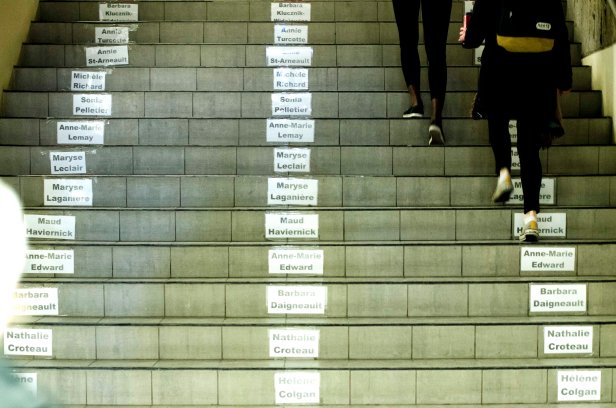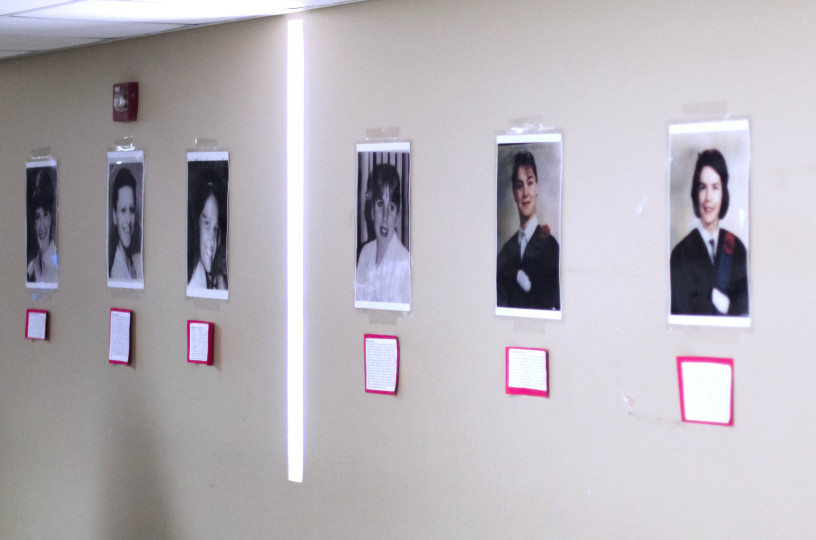Carleton groups came together in the days leading up to Dec. 6 to mark the 27th anniversary of the École Polytechnique massacre in 1989.
A vigil was held on Dec. 5 at the statue outside the Mackenzie Building, and a display was set up on the third floor of the University Centre to commemorate the 14 women killed.
Sydney Schneider, programming co-ordinator at the Carleton University Students’ Association Womyn’s Centre, said the memorial is run every year.
“We choose December 6 because it’s a very Canadian event,” Schneider said. “We often think about how this happens in the [United States] but doesn’t happen here in Canada, but unfortunately it does.”
Fourteen women were killed and 14 were injured at the École Polytechnique in Montreal when a gunman attacked the school. The university houses the engineering department of the Université de Montréal, and the attacker was angry that women were allowed to study the subject.
“This is a highly traumatic event in Canadian history, and I think it’s more tangible because it’s such a big event that we can associate these women and these faces with misogynistic violence,” Schneider said.
She said the theme of this year’s event was to commemorate all people killed by misogynistic violence and those who aren’t normally seen, such as black women and indigenous women.
Isis Bennet, a masters of civil engineering student, spoke at the vigil and said she has encountered subtle barriers that have made it difficult for her in the male-dominated field.

She said women have to be more qualified to be considered for the same job and, on average, female researchers have to publish three to 20 more papers than their male colleagues.
“I always turn to thinking about the field and how it didn’t always used to be as welcoming to women as it is today,” she said. “It reminds me that we’ve made a lot of huge strides in the technical fields to being open and accepting of women.”
Currently, around 12 per cent of people in engineering are women, according to Bennet. Women make up 20 per cent of engineering students at university. She said the best way to make engineering more accessible for women is to get young girls interested in the field and curious about science.
“I know that when I was a teen I absolutely hated all things science because it wasn’t cool. That seems a bit ridiculous because I’m in engineering now,” Bennet said.
Brendan Lucas, a third-year student and vice-president (advocacy) of Carleton Engineers Without Borders, said the organization has a strong focus on trying to increase the number of women who study the subject.
He said the group is trying to get Carleton to drop the physics prerequisite for high school students applying. This increased the number of women studying engineering at the University of British Columbia from 16 per cent to 25 per cent over two years, he said.
Lucas said the Polytechnique massacre is something on his mind in December and something people in the program think about during the month.
“Absolutely it’s on our minds,” he said. “It’s an awful thing that happened to a bunch of girls just for trying to play a role in science [and] in technology.”






